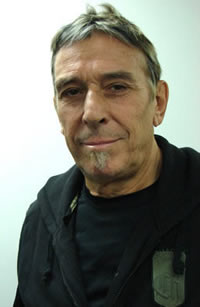

Books - more reading
Cale is mentioned in a lot of books. He also wrote a couple of forewords. A short list of interesting volumes:
Books about Nico
These two books are worth reading. James Young's account is a tragic tale, but also quite funny from time to time. Jennifer Otter Bickerdike has dug a lot of information, but she gets in the way of her subject sometimes, which is quite annoying.
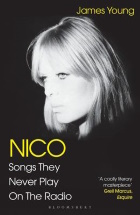
Nico - Songs They Never Play On The Radio
Written by James Young
Bloomsbury, 1992
256 pages
ISBN-10: 0747511942
ISBN-13: 978-0747511946
Written by her former keyboard player. Cale as a druggy producer of the Camera Obscura album and sharing the bill on a Japanese tour in 1988.
"Nico and Cale did not get along well. He objected to her smoking in his presence. Then there were problems about the shows; Nico wanted to go on last; "This John Cale - who does he thinks he is? I'm a star too." But Cale was top of the bill. Though he had been booked with a group he'd turned up on his own at the end of a long solo tour. The Japanese were politely astonished at such a blatant breach of contract."
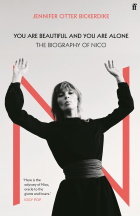
You Are Beautiful and You Are Alone: The Biography of Nico
Written by Jennifer Otter Bickerdike
Faber & Faber, 2021
512 pages
ISBN-10: 0571350011
ISBN-13: 978-0571350018
On recording her debut album Chelsea Girl in 1967:
"None of us had any patience, so it was very sloppy. We didn't have anybody telling us how to do things."
Books about Lou Reed
It's not hard to find much more books about the second coolest guy in the Velvets. These four will suffice.
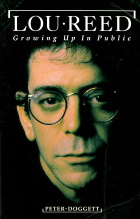
Lou Reed - Growing Up In Public
Written by Peter Doggett
Omnibus Press & Schirmer Trade Books, 1995
182 pages
ISBN-10: 0711930023
ISBN-13: 9780711930025
The Velvets, Songs For Drella.
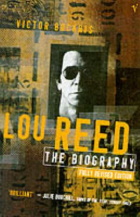
Lou Reed - The Biography (fully revised edition)
Written by Victor Bockris
Vintage, 1995
352 pages
ISBN-10: 0099303817
ISBN-13: 978-0099303817
The Velvets, the reunion tour, Songs For Drella. On writing that album:
"It was done by osmosis. When we first sat down and started playing, there was amazing energy - it was aggressive. We sat down and talked about the memories we had, and then Reed shut himself in with a tape recorder running and showed up later with a kind of summation of what had happened. We sat there and bandied them around. It's difficult for him to collaborate on that level - it's difficult for him to collaborate period. And he admits it."
Expanded again in 2014 under its original title, Transformer: The Complete Lou Reed Story.
The Velvets, Songs For Drella, the reunion tour.
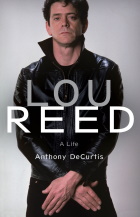
Lou Reed: A Life
Written by Antony DeCurtis
Little, Brown and Company, 2017
528 pages
ISBN-10: 0316376558
ISBN-13: 9780316376556
The Velvets, Songs For Drella, the reunion tour, the relation with Cale. The best Lou bio so far. On trying to have Cale on his New York album in 1988:
Reed also invited Moe Tucker to play drums on two of New York's tracks. He also planned to have John Cale play on that album, but Maher (Fred Maher who drummed on all the other tracks - HW) inadvertently sabotaged that possibility when he mentioned to Cale that Tucker would come in as well. Reed had not informed Cale, who said to Maher, "What is this, some sort Velvet Underground reunion?" That was the end of that - at least for a while.
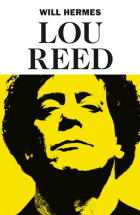
Lou Reed: The King of New York
Written by Will Hermes
Penguin Books, 2023
560 pages
ISBN-13: 9780241296509
About performing Songs For Drella:
Reed and Cale renewed their admiration for each other during the project. But it was hardly stress-free. Reed wanted things his way cording to a chilly fax memo sent to Cale, Reed threatened to scrap the project outright unless Cale accepted his choices. Premiering the work at the Brooklyn Academy of Music Opera House, following a warm-up production at the nearby St. Ann's Church, the two men delivered the songs unadorned, with just guitar, keyboards, and viola. During a filmed performance, Cale delivered the "I hate Lou" line with hurt and regret - not at all, it appeared, the way Reed had lobbied for. As Cale's words landed, what seemed a flickering wince of pain blew across Reed's stoic face like a storm cloud before he turned away from the camera.
Books about Jonathan Richman, Patti Smith
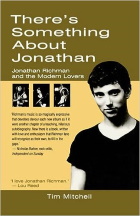
There's Something About Jonathan - Jonathan Richman and the Modern Lovers
Written by Tim Mitchell
Peter Owen Publishers, 1999
224 pages
ISBN-10: 0720610761
ISBN-13: 978-0720610765
The aborted Modern Lovers demo sessions in 1973 and the subsequent producing of their debut album.
Cale instructed the engineers on how to set up the microphones and treated Jonathan's vocals with reverb and high treble, reducing his natural nasality. Clarity was maintained throughout, even during the guitar/organ battles of the instrumental breaks - if Cale had produced the Velvet Underground's White Light/White Heat it might have sounded like this.
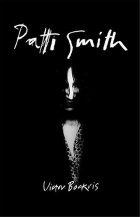
Patti Smith: An Unauthorized Biography
Written by Victor Bockris
Fourth Estate Ltd, 1998
288 pages
ISBN-10: 1857026764
ISBN-13: 9781857026764
Producing the Horses album and acting as the support act during her American tour in January 1976.
"At that point something clicked. There was a track she did where she read poetry. I had her read poetry against her poetry and there were two lines going on and I had her mix it. When Clive Davis heard that, he said, 'Hey, you've got a collaborator.' And that's exactly the thing that made that record different. She was really a poet and you had to respect the fact that she was not a musician but out of sheer bravado and desire was making herself into a rock-and-roll singer and basically wanted to be Keith Richards. But I was awed that she had gotten all that input from Bob Dylan and Lou Reed to some extent. She had a Welsh Methodist idea of improvisation, in that it was like declamation. Lou was kind of psychological, but a lot of Patti's impulses came from preaching."
Need More books?
Punk! - An A-Z
Written by Barry Lazell
Hamlyn, 1995
160 pages
ISBN-10: 0600586359
ISBN-13: 978-0600586357
Forword by John Cale.
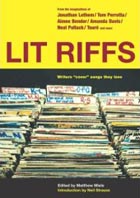
Lit Riffs
Edited by Matthew Miele. Introduction by Neil Strauss
MTV Books, 2004
422 pages
ISBN-10: 0743470265
ISBN-13: 978-0743470261
Writers "cover" songs they love. Contains the short story Dying On The Vine by American writer Elissa Shappell. It is a quite lame tale about a relationship going South.
The song is not featured on the accompanying CD.
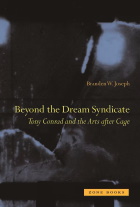
Beyond The Dream Syndicate: Tony Conrad and the Arts after Cage
Written by Branden W. Joseph
Zone Books, 2011
489 pages
ISBN-10: 1890951870
ISBN-13: 978-1890951870
"Tony Conrad is exemplary of the 1960s artist who remains inassimilable to canonic histories. Creator of the "structural" film, The Flicker, collaborator on Jack Smith's Flaming Creatures and Normal Love, follower of Henry Flynt's radical anti-art, member of the Theatre of Eternal Music and the first incarnation of The Velvet Underground, and early associate of Mike Kelley, Tony Oursler, and Cindy Sherman, Conrad has significantly impacted cultural developments from minimalism to underground film, "concept art," postmodern appropriation, and the most sophisticated rock and roll. Yet Beyond the Dream Syndicate does not claim Conrad as a major but under-recognized figure.
Rather, by drawing on Deleuzian notions of the "minor" and the Foucauldian problematization of authorship found in Conrad's own artistic/musical project, Early Minimalism, it disperses him into an "author function." Neither monograph nor social history, the book takes Conrad's collaborative interactions as a guiding thread by which to investigate the contiguous networks and discursive interconnections amongst the arts of the time."
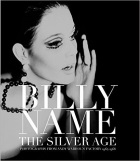
Billy Name: The Silver Age: Black and White Photographs
Compiled by Dagon James
Reel Art Press, 2014
448 pages
ISBN-10: 1909526177
ISBN-13: 978-1909526174
Foreword by John Cale. Comprehensive collection of Billy Name's black-and-white photographs from Warhol's Factory.
"In the narration A Dream from the album Songs for Drella, we hear Andy's voice saying wouldn't be great to have some fun - and how he couldn't find Billy either 'he didn't hear me or he didn't want to answer. Which was so strange because even if I don't like reunions I've always loved Billy' - well, we all loved Billy. As I recall he was always in the Factory. The pimpernel of the silver ballroom - sleeping there as a wide eyed guard, then much later disappearing into his room for months at a time only ot emerge, to take pictures then retreat back into silent oblivion."
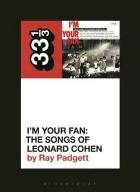
33 1/3 I'm Your Fan: The Songs of Leonard Cohen
Written by Ray Padgett
Continuum International Publishing Group, 2020
168 pages
ISBN-10: 1501355066
ISBN-13: 978-1501355066
In-depth analysis of the Leonard Cohen tribute album I'm Your Fan album, released in 1991. The one with his rendition Hallelujah:
"Once Cale had selected "Hallelujah," he encountered an immediate problem: he didn't know the words. Living in America, he couldn't buy the album to learn them. So he went to the man himself. As producer Beauvallet recalls, Cale came to to the producers and asked, 'Do you think that Leonard Cohen would accept for me to cut off some of the lyrics to, you know, make it a bit lighter?' We said, 'Well, we can't answer that for him, but here is his telephone number.'"

The Chelsea Underground Anthology (Poetry & Art Inspired by Warhol, The Factory, Lou Reed & NYC Scene)
Compiled by David L. O'Nan (Editor), HilLesha O'Nan (Editor), Sarah Montani (Illustrator), Robert Frede Kenter (Photographer)
Fevers of the Mind, 2024
94 pages
ISBN-13:979-8873883639
The Chelsea Underground is poetry & art inspired by Andy Warhol, Edie Sedgwick, The Factory, Nico, Lou Reed, The Velvet Underground, John Cale & the NYC Scene from the 60's-80's. Contributors include: Sarah Montani, Dusty Jaggers, David L O'Nan, Lynn White, Clive Gresswell, James D. Casey IV, Dezmond Davanti, Robert Savela, Robert Frede Kenter, Peter Hague, Ivor Daniel, Willow Croft, w v Sutra, Joe Kidd, Elizabeth Cusack, Marisa Silva-Dunbar, Emma Lee, Mark Gilbert, Alison Stone, Consuelo Arias, Gail Wasserman, D.C. Nobes, & Stephen Kingsnorth.
Canadian poet and visual artist Robert Frede Kenter contributed a portrait taken at the Prospect Park Bandshell in New York on August 19, 2023, a poem and a portrait inspired by Dr. Mudd from the Sabotage/Live album and the poem Dreamy Creatures (For John Cale and Siouxsie Sioux).
Consuelo Arias, Professor of Spanish and Women's Studies at Nassau Community College in Garden City, NY, contributed a free-flowing essay: John Cale's Sartorial Splendor: The Beauty of the Chameleon:
He sports a classic black conductor's suit with a few idiosyncratic details. The front of the tailcoat is open, with three matte metal buttons on each side and a discrete stand-up collar. Underneath, he sports a snug layer of black fabric. A stark white collar, almost priestly, circles his neck. The back of the jacket's cinched waist is tightly held in place by a short and narrow black satin belt, creating a tidy florid shape.
The coat's shoulders are a bit broader than his own and slope a bit downward, contrasting with the small cinched waist in the manner of a 19th-century gentleman. He sits erectly, immobile, except for his fingers floating on the piano keys in a secret choreography. His hands are slender, with pronounced joints and veins, his nails, perfectly groomed.
His extremely thin face is a study in planes, his high prominent cheekbones create a concave, vaguely cadaverous profile set off by his distinctly large nose. His hairstyle is unusual for a formally dressed man, the right side of his head, from his ears to the top of his hairline, is shaved off, the rest is bluntly cut and reaches his cheek, echoing the geometry of the tailcoat.